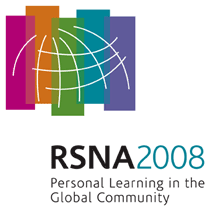
Abstract Archives of the RSNA, 2008
Joerg Schaefer, Presenter: Nothing to Disclose
Grit Welzel, Abstract Co-Author: Nothing to Disclose
Frederik Wenz MD, Abstract Co-Author: Nothing to Disclose
To evaluate the relationship between health related quality of life (HRQoL) regarding urinary morbidity and postimplant dosimetry after permanent prostate brachytherapy.
The EORTC QLQ-PR25 and the modified ICS-male questionnaire were sent to 296 men treated with prostate brachytherapy at Mannheim Medical Centre, University of Heidelberg/Germany between June 1998 and 2003 December. 258 patients were alive at time of assessment. Of 238 questionnaires (92% response rate) 231 were suitable for analysis (97%). Median follow up was 51 months (13-78 months). Postimplant dosimetry was based on CT-images taken 6 weeks after implantation of the iodine-125 seeds. Calculated parameters were prostate volume receiving 100% (V100), 150% (V150) and 200% (V200) dose, dose to 90% of the prostate volume (D90).
Patients with urge symptoms had higher values for D90, V100, V150 und V200 as patients without urge symptoms. Patients with urinary incontinence and stress incontinence have larger prostate volumes.
Prostate volume and D90 are relevant parameters for HRQoL regarding urinary morbidity.
Schaefer, J,
Welzel, G,
Wenz, F,
Postimplant Dosimetry and Urinary Morbidity after Permanent Prostate Brachytherapy. Radiological Society of North America 2008 Scientific Assembly and Annual Meeting, February 18 - February 20, 2008 ,Chicago IL.
http://archive.rsna.org/2008/7000578.html

